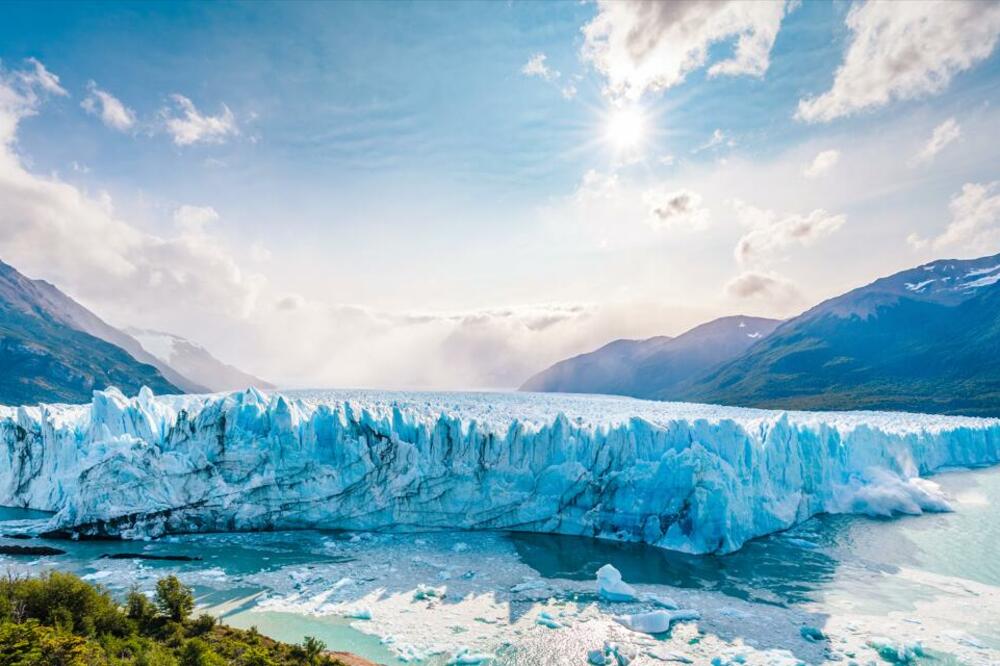Chile's National Forestry Corporation, a state-run non-profit agency overseen and funded by Chile's Ministry of Agriculture, has permanently closed a popular glacier in Patagonia, angering adventurers and local guides.
The decision comes after a massive ice break from the glacier earlier last month, after which the government conducted a study in the southern Ajsen region and found that the Explorers, or Exploradores, glacier in Laguna San Rafael National Park is melting rapidly and could soon shrink dramatically. .
After the study, officials announced a permanent suspension of hiking on the Exploradores. For local guides, the decision represents both a financial problem and a personal loss. Glacier climbers around the world are being forced to adapt to the impact of warmer temperatures on well-known routes.
The decision by Chile's National Forestry Corporation to permanently ban hikers from a popular Patagonian glacier has angered adventurers and local guides alike. What officials see as a safety issue — citing rapid, destabilizing melting — has sparked debate about the risks of ice climbing as the climate changes rapidly.
Glacier Explorers in Laguna San Rafael National Park has been a well-known ice hiking destination in the southern Ajsen region for at least two decades. However, a two-week study by government hydrologists found the glacier was reaching a dangerously unstable "tipping point".
"There are evident risks and uncertainty regarding the behavior of the glacier," the agency's message from October 31, which permanently prohibits hiking on the ice, states. "Conditions are not safe for ecotourism activities on the Explorers Glacier."
Ice climbers around the world are being forced to adapt to the effects of warmer temperatures on well-known routes. Last July, a chunk of the Marmolada Glacier in the Italian Dolomites, the size of an apartment building, collapsed onto a popular hiking route, killing 11 people. Last summer, a number of agencies canceled missions to Mont Blanc for the first time, as melting ice led to an alarming number of rockfalls.
Regardless, the closure of Explorers Glacier overnight came as a shock to local guides.
Bianka Miranda has been leading expeditions on that glacier for more than a decade, and her local tour company now faces the problem of having to refund the money to agencies that made reservations until March 2024.
The national park itself will remain open, and its 20.000 annual visitors will still be able to see the glacier from a boat. For Miranda, however, the end of Explorers Glacier hiking is simply painful in a personal sense.
"For us, the closure is not only an economic, but also an emotional blow," she said. "We have been working at this place for more than 10 years and it has become our second home."
The study - and the eventual closure of the Explores glacier - came after a huge chunk of ice fell from the main body of the glacier on October 6.
No hikers were injured, and guides like Miranda say such incidents are normal for glaciers, which are constantly changing. A government study, however, suggests that massive fragmentation will soon become much more common.
Explorers Glacier has been thinning by half a meter a year since 2020, according to drone footage collected by government hydrologists. The number of meltwater lagoons at the top of the glacier also doubled during this time. As the glacier's total surface contact with water increases—either where the glacier terminates in the Chileno Valley or from the current 488 surface lakes—it melts faster.
Together, the report says, thinning and an increasing number of glacial lagoons are pushing Glacier Explorers toward one of two possible outcomes.
Either a catastrophic amount of ice could break off from the main body of the glacier or hundreds of small lagoons would cause the front of the glacier to break away. Either way, the report predicts the glacier will begin a "rapid" retreat as melting accelerates.
Neither the National Forest Service report nor the closure notice mentions climate change, but the report describes the glacier as having been relatively unchanged for nearly a century, until it began to thin rapidly in recent decades.
This is happening to other glaciers around the world as greenhouse gas emissions fuel warmer ocean temperatures. A study this year predicts that two-thirds of the world's glaciers will melt by the end of the century, raising sea levels by 11 cm and forcing more than 10 million people worldwide to relocate.
Will Gad is a Canadian guide and adventurer - the first person to climb the frozen Niagara Falls - a man who watches the ice-covered world he loves crumble around him.
"When I was a kid I thought glaciers were permanent and so big that nothing could affect them," he says. "But now it's becoming a real problem for us as guides. Imagine you showed up at your office building and half of it was gone."
However, Gad adds, permanently closing routes is not always the solution.
"There are probably situations where it is justified, but in general in mountaineering and climbing you have to make your own decisions".
For Miranda, calculated danger has always been a part of exploring Laguna San Rafael National Park. As in Gad's case, her access to the place she considers a second home is threatened, while she and other guides try to negotiate a new entrance route to the glacier with the authorities.
"We work in adventure tourism, there's always risk," said Miranda. "If we're going to close this, let's stop climbing Everest, let's not climb anywhere, stop skydiving."
Bonus video:




